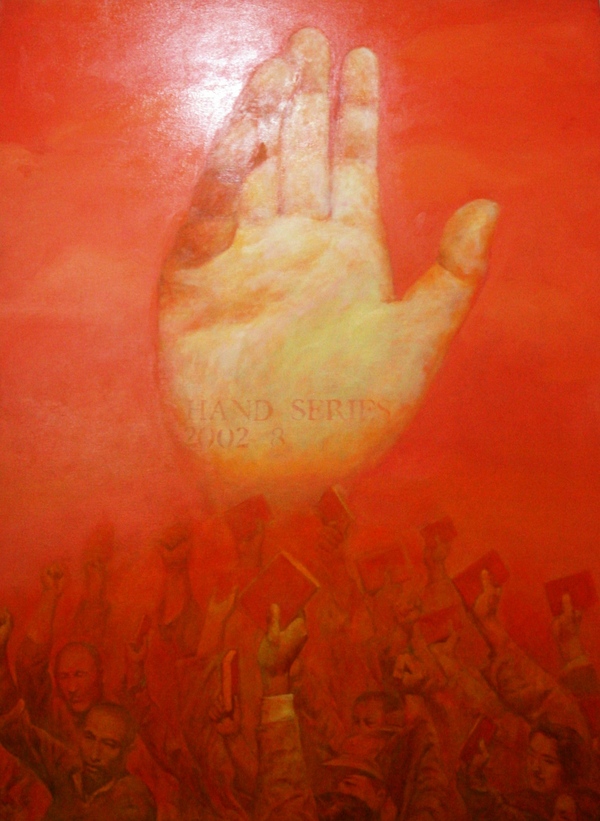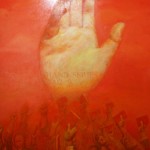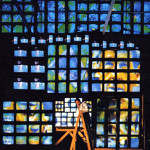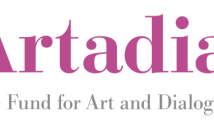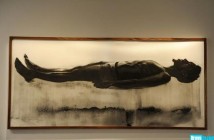I am on the verge of a journey that is going to take me to three cities in Asia. Thanks to the Asian Cultural Council I have the opportunity to visit Seoul, South Korea, Beijing, People's Republic of China, and Singapore. The main motivation for this trip is to meet with artists, curators, and cultural figures that are investigating and immersing themselves in new media. I am looking at how new technologies are affecting not only the artists but the communities around them. How are these three cultures, each distinct in their histories and technological evolution, using new media? Is there a difference in approach and style? While new media art has been around long enough in the US to have developed a critical discourse, is this true of these three areas of Asia? I ask this not to posit a diametrically opposed set of paradigms, East vs. West, but I am curious to see if the critical eye has developed as rapidly as the technological revolution and if so, in what manner? Each of these cities represents a different approach to new media. All three of these cities have a history of art production that grounds the current movement. They are moving forward within a historical context that both informs and motivates. My goal, as an American who spent much of his life in Asia, is to look for commonalities, divergences, and lessons. The dynamism once inherent in American art movements has shifted along side the global economic shift. The Asian art market has exploded in the past few years as has its financial markets. This shift shouldn't be seen as a threat or an opportunity for financial gain as the implications are far more complex than that.
I am interested in exploring two different things. The first is the way in which the art communities support and communicate with each other. A large part of the reason for the existence of Big RED & Shiny was to create a community that talks about and is part of the local art community. We created something for us to talk about art and other things where there was nothing. I think that this has helped to create a greater sense of a connection amongst us artists here in the city (and hopefully beyond). Whether people are bitching and moaning about us or praising us, there is still a sense that we are doing something and that Boston has something to offer. So my initial question was: are people doing this in other communities and wouldn't it be interesting to see what is happening in three cities that have exploded in their creation and display of new media art? I am admittedly biased. I wanted to go where I thought I would find work that interested me. Hey, it was my grant proposal.
I picked three communities that had significant connections to new media art. Seoul is the center of media for Asia. The majority of television programs broadcast across Asia are produced here. Seoul is also the home of major corporations that have created spectacular spaces that bring together artists and cutting edge media technology. Seoul is also the home of the Nam June Paik Arts Center and the Digital Media Biennial. It is a country that has embraced new media art in a way that leaves us all in the dust. This isn't surprising given that technological saturation is leaps and bounds beyond that of the US.
My next pick was a no-brainer. Beijing is the center of the Chinese contemporary art market. Despite the economic downturn that has kept many westerners away the arts community is still strong and quite entrenched. This is remarkable when you think that less than twenty years ago artists were arrested and the art community was suppressed. The Chinese government initially viewed artists with suspicion, seeing them as agents of dissent. While still somewhat censored, artists are able to explore increasingly complex issues that challenge their own cultural blind spots. I am also curious to see how this line is walked. How are artists reacting to the challenge of making art that questions but is also subtle enough to pass the government censors? I am also interested in what local artists think about the fascination that the West holds for their art. Asian art and more often Chinese art in particular, have come to dominate the art market with Chinese artist's work commanding greater and greater amounts at auction. This can be construed as a fad but it has very real effects on the type of art work that gets created. My focus will be meeting video artists and filmmakers but I think that I'll be exposed to a vast array of media in my week there. The galleries of New York and Paris were filled with video art from Chinese artists during my recent visits and it seems to be a medium that is gaining ground in a society that has traditionally favored the 2D arts.
I chose to end my trip in Singapore. There were a couple reasons for that. One was that I had been there before so I would be ending on familiar territory. Another reason was that the Singapore government has thrown its weight behind the arts. Singapore has consistently been at the top of educational world when it comes to the maths and sciences but the arts weren't really emphasized. This seems to have changed. In recent years the Singapore government has really put its financial strengths behind the arts. The Singapore Biennial was created and numerous museums and art institutions have been created. My curiosity lay in whether or not this has translated into a vital, local arts community. It is one thing to create a top down art infrastructure but has the community been created by the people who are there for the arts? What comes first: the artists or the art infrastructure?
So that is one reason for visiting these cities. My other motivation is to link our community to the greater world. Boston is a vibrant international city that all too often defaults to regionalism. We look to New York for our validation. While New York City is still the center of the American art market (has LA surpassed it yet? Not sure) there are many reasons for us in Boston to look beyond. Video and new media play a large roll in the history and culture of our city. Both Nam June Paik and video have a long history here, one that is frequently overlooked. I look at my trip as an opportunity to, not only discover other art communities, but to let them know about ours. I think we do a fantastic job here and we should integrate ourselves with the greater art world.
I'll be blogging on Our Daily RED as I go. My trip begins in Seoul on Saturday the 10th of October. Feel free to comment and advise as I go. I'll be posting interviews and reviews on the blog. Drop me a line.

